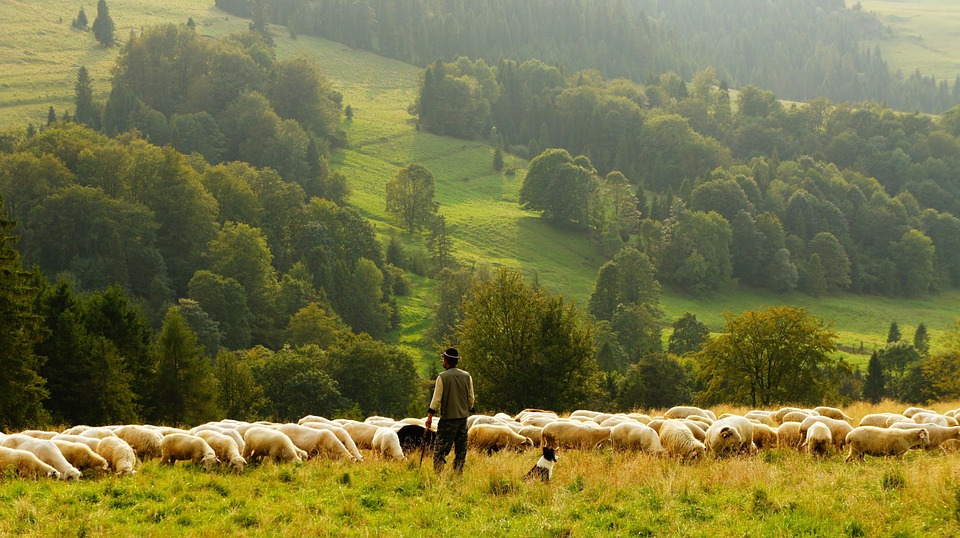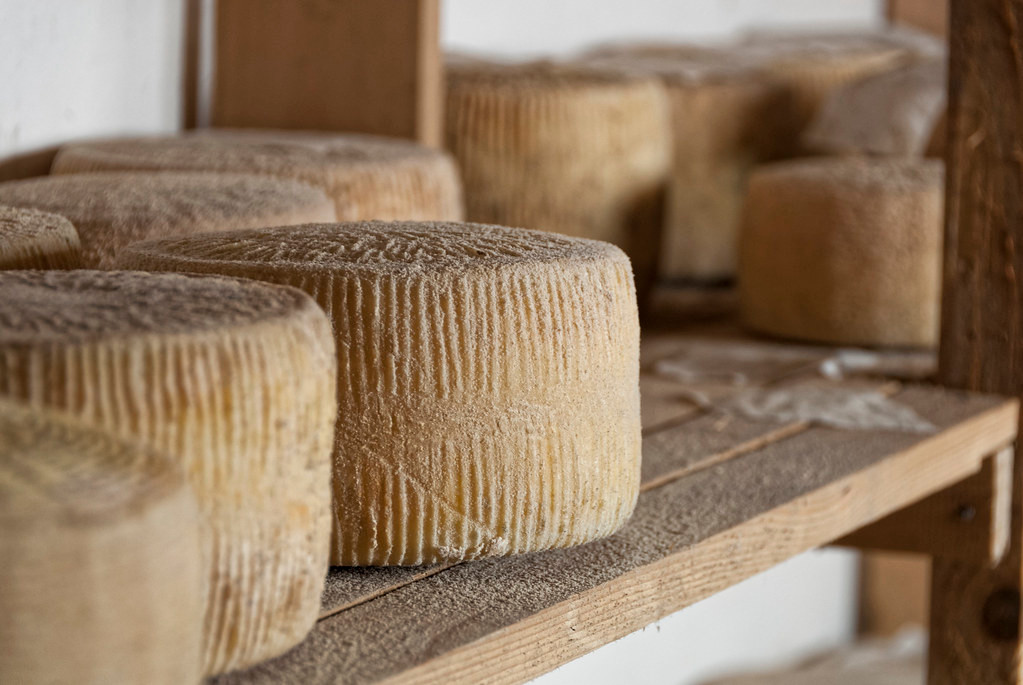No a todo el mundo le encanta el queso, aunque somos muchos los que lo adoramos. Ocurre a menudo con los sabores potentes. Pero hoy, nuestro viaje no será solo potente: ¡será de infarto! Buscamos algo realmente fuera de lo común. Y muy antiguo. Hoy descubriremos juntos un queso italiano único: ¡queso con gusanos!
¿Horror... o delicia?Lo que vamos a presentarles hoy pertenece claramente a la familia de los «platos nacidos por error», como el gorgonzola. Según algunas leyendas, también la farinata de garbanzos pertenece a esta categoría. Empecemos con la versión de la historia tal y como se cuenta en la bella isla de Cerdeña, aunque existen otras similares en distintas partes de Italia. Se dice que un molde para queso pecorino, quedó expuesto a las moscas de la leche debido a una pequeña grieta en su recubrimiento. Y que cuando se supo lo que había pasado, era demasiado tarde: las larvas habían invadido todo el molde. El agricultor, sin embargo, práctico como buen agricultor, y atraído por el penetrante aroma, probó el queso de todos modos, y quedó tan entusiasmado que empezó a producir este casu marzu, literalmente «queso podrido». Vale, lo admito: la idea de masticar un pedazo de queso repleto de larvas arrastrándose me hizo apartar la cara de asco la primera vez que lo tuve delante. Pero no te engañes como hice yo: es algo que merece totalmente la pena. Además, como diría nuestro práctico agricultor: las larvas se pueden apartar, ¡no es obligatorio comérselas! Si la tradición de este queso se ha mantenido viva durante todos estos años, sin duda hay un motivo: ¡su calidad! Su sabor único e intenso es el resultado de la contaminación sufrida durante la fase de envejecimiento. El proceso inicial no difiere del empleado para un pecorino envejecido a la manera clásica.
The
pasteurized milk is added to the rennet, after which the curd is cooked again and separated from the whey. When the crust begins to form, however, the fate of the
casu marzu moves away from that of the other Sardinian
pecorino cheeses, or from that of most world cheeses for that matter. Small incisions are made on its crust. Then oil or raw milk is added in order to attract flies. Finally, the form, placed in a dark and airy environment, is left to the action of the dairy flies, which will lay their eggs inside. In the following weeks, the larvae released from the eggs will begin to eat the cheese and enriching the cheese paste thanks to their enzymes. After about 3 months, the cheese obtained is a unique one, with a creamy consistency, loved by the most experienced palates because of its pungent flavour and its penetrating aroma. Our advice is to break a generous piece of Sardidian
pane carasau, the typical thin and crunchy bread found throughout the island, and sprinkle it with
casu marzu. You will not regret it!
 From a clandestine product to a protected trademark
From a clandestine product to a protected trademark
His fame is now international. This is due not only to its undeniable extravagance but also to the fact that it has been the object of many talks and legal disputes. The point is that – not surprisingly – the production of this cheese is illegal according to European health regulations. And it is extreme not only for regulators. In 2009 for instance, the
casu marzu was mentioned in the Guinness Book of Records as the most dangerous cheese in the world, despite the fact that there are no scientific studies that prove it. This has certainly helped the cheese with worms to be known all over the world, prompting many to explore the Sardinian hinterland in search of this curious product that could not be found in shops... The cheese became to be known as a precious and rare gem for cheese connoisseurs. So precious that the Sardinia region has decided, to the detriment of European regulations, to insert the
casu marzu in the
national IGP register, in order to safeguard this exceptional product and its silent peasant production that has been going on since time immemorial. In a strange limbo between legality and illegality, today its production is partly allowed thanks to a scrupulous processing that follows strict health guidelines; however, large-scale sales are prohibited.
Bueno, algunos de mis amigos sardos sostienen que el verdadero y tradicional queso sardo con larvas no es el que se produce en las condiciones asépticas que exigen los estándares sanitarios de hoy en día. Nos ofrecen un producto seguro, pero según los mayores, la vieja, buena y querida bacteria ayudaba a la fermentación del queso y le otorgaba un sabor que ahora ya casi se ha perdido. Si tu curiosidad es tan grande como tu apetito, tú sabes que para probar el casu original tienes que tener la suerte de conocer a un pastor que lo produzca de manera privada e ilegal. Y por supuesto, no te estamos invitando a quebrantar la ley.
 Rotten cheese… how many are there?
Rotten cheese… how many are there?While the Sardinian
casu marzu is for sure the most famous of all the "
cheeses with worms". However, this ancient tradition is much more widespread in Italy than one might think. In fact, there are numerous similar products in other regions: sometimes almost forgotten, sometimes thrivingly alive among farmers, always with a unique flavour and inestimable cultural and historical value. Here is a list of some of them:
• In
Puglia there’s the
frmag punt (pointed cheese, a reference to the holes made with a pointed instrument to let the flies in)
• In
Calabria there’s the
casu du quagghiu (untranslatable)
• In
Abruzzo there are the
cacio marcetto and the
u cace fraceche, perhaps the most similar to the Sardinian one. This particular spreadable
pecorino is found only in the Abruzzo hinterland, in the territories surrounding the Gran Sasso mountain
• In
Liguria it is given the strange name of
gorgonzola coi grilli (literally
gorgonzola with crickets), where by crickets we mean the small larvae that – we forgot to mention it - can somehow jump
• In the territories of
Piacenza there is the
furmai nis cui saltarei, directly from a form of grana-parmesan which, if for some reason did not ripen in the right way, was reused to produce
furmai nis • Also
Friuli region [LINK articolo EN72] has one, called
salterello (litterally “jumpy”), the legal production being fuond only in the province of
Udine.
Each of these examples has its own history and peculiarities, but they all share a form of love for some of the more extravagant traditions of the past. Extravagance I said? Well, I may be wrong. This is an ancient and very tasty tradition, rooted in a frugal past where anything that could be reused would be. A tradition that – if we look carefully, we find also beyond Italy. Beside
Corsica, that is culturally much close to Italy, and where you can find the variant called
casgiu merzu, there are also cheeses modified not by larvae but by mites in
Germany - the
milbenkase - and in
France, the
mimolette.
I have tasted and appreciated them all. I am of the opinion - and I know that I am a bit biased - that the most intense (and tastiest) are the Sardinian
casu marzu and the Abruzzo cheese
marcetto.
So… what are you waiting for?

